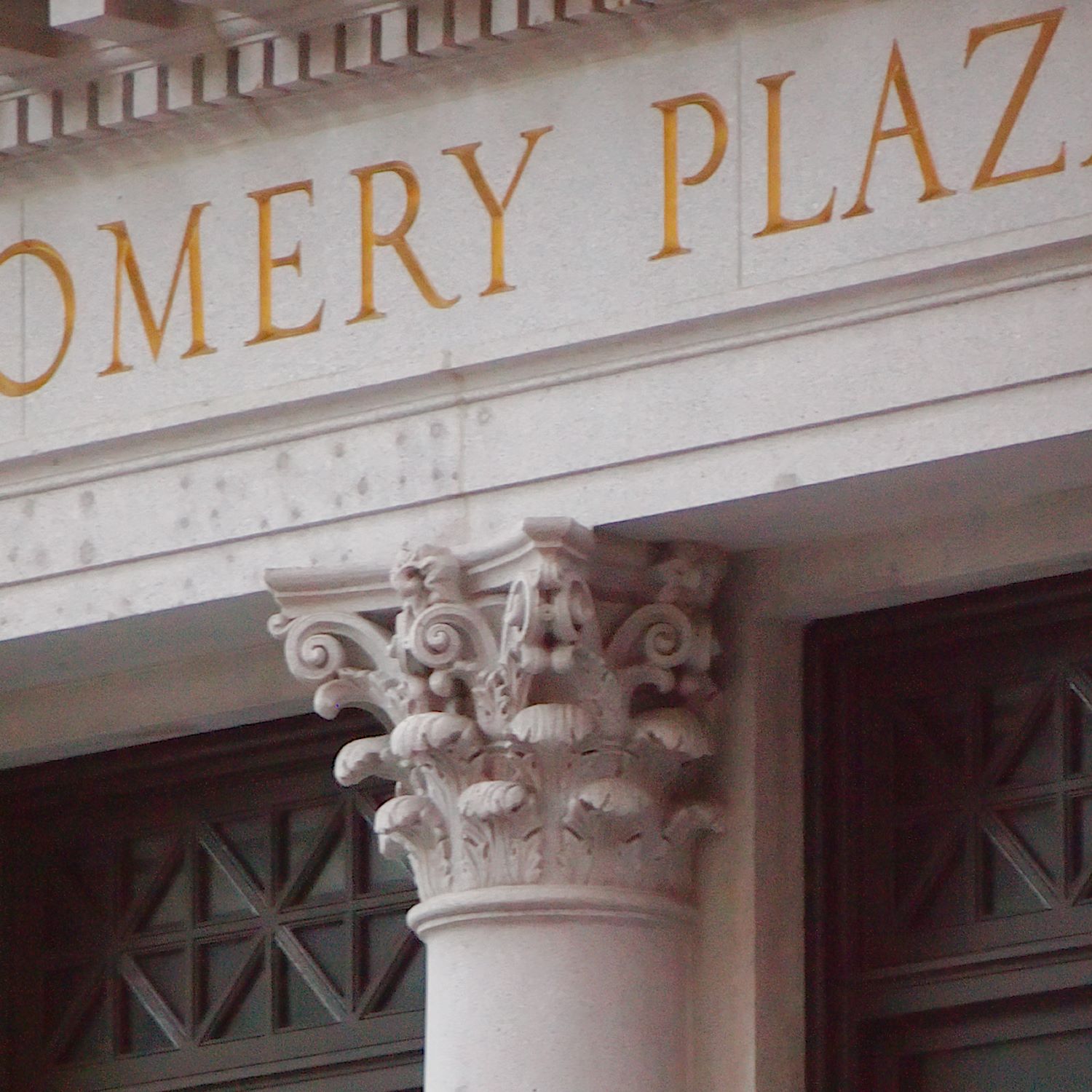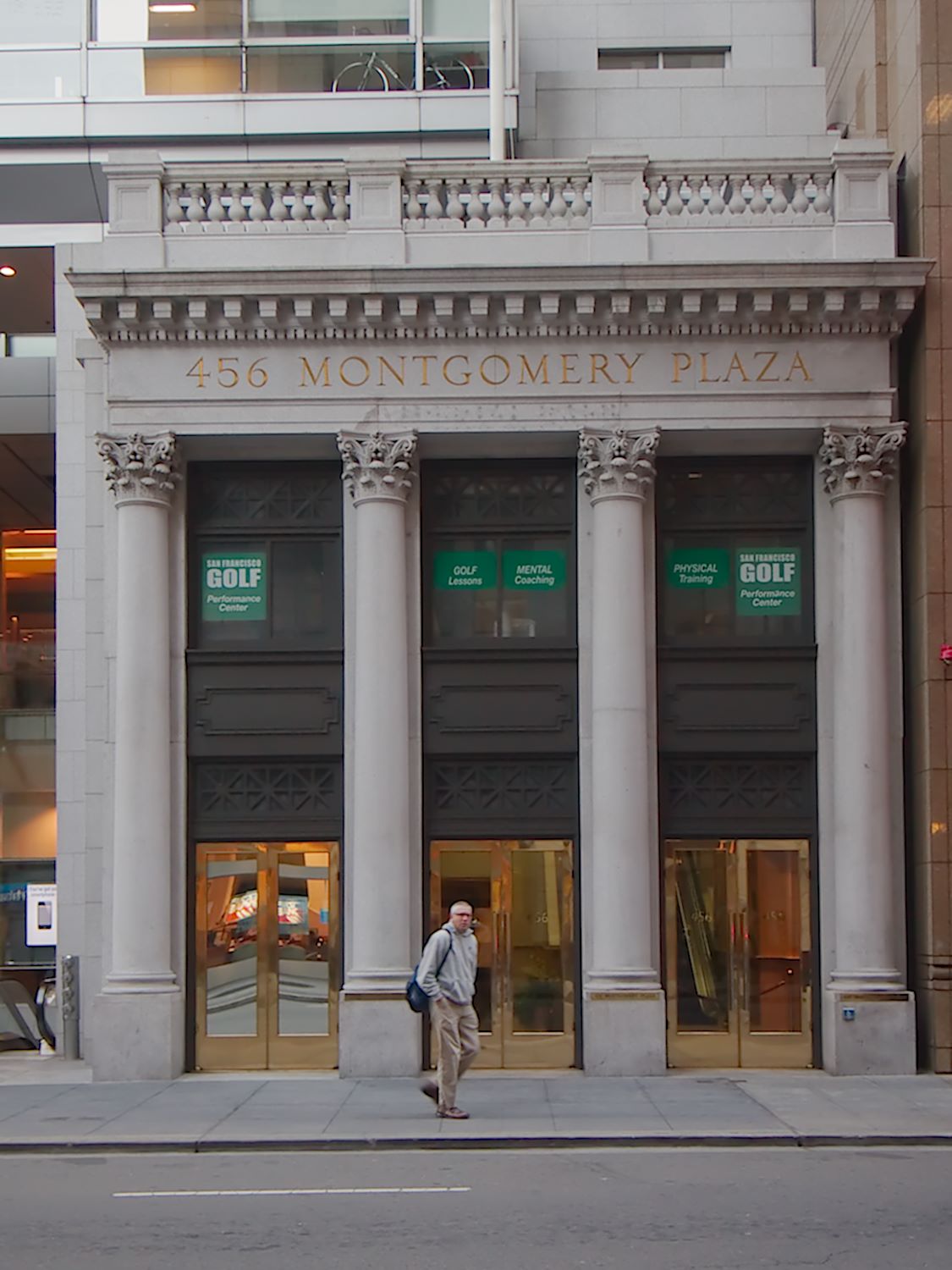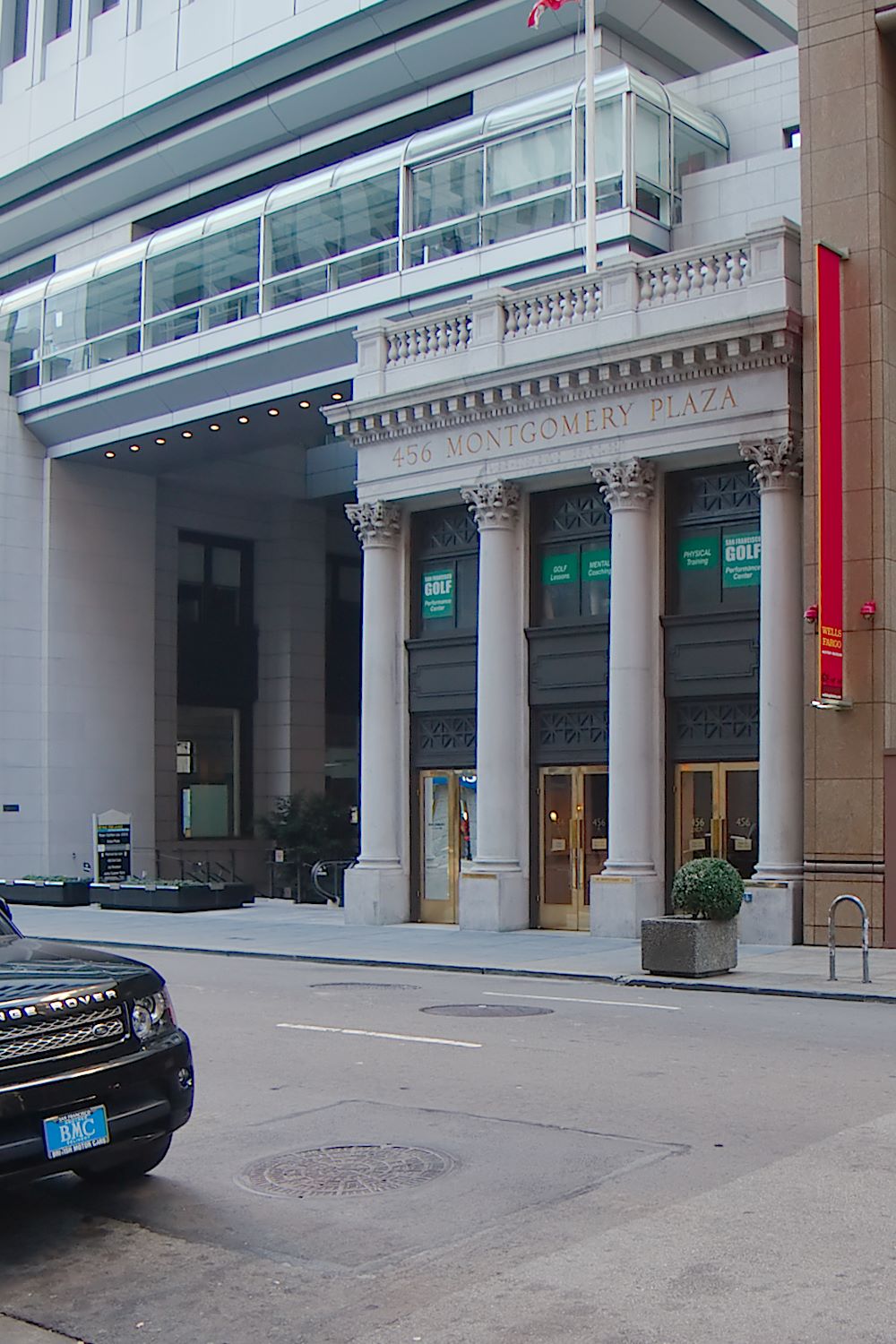Antoine Borel Bank
A type of architecture that has quickly become obsolete in our era is the bank temple. In the nineteenth century, banks felt a need to communicate such values as probity, stability and solvency to their clients by building offices resembling classical temples. Albert Pissis created several.
Antoine Borel arrived in California from Switzerland in 1861, joining his brother Albert who was already here, operating as a commission banker for Swiss clients. Albert would soon return home, but Antoine remained until his death in 1915. The Borel bank was what is now known as a "private bank", conservatively investing wealthy depositors' funds in stocks and bonds rather than commercial loans.
Borel served many years as the Swiss Consul in San Francisco and was also on the boards of several large local companies, such as Spring Valley Water Company and California Street Railway, and participated in the restructuring of the Bank of California after its 1874 failure. He married locally and was survived by five daughters and a son. Descendants are prominent in banking, real estate and other businesses, mainly in San Mateo County.
The building was completed in 1908, a perfectly proportioned two story Corinthian Facade on a narrow 27 foot front. In recent years it has since been clumsily incorporated into a much larger office tower.






